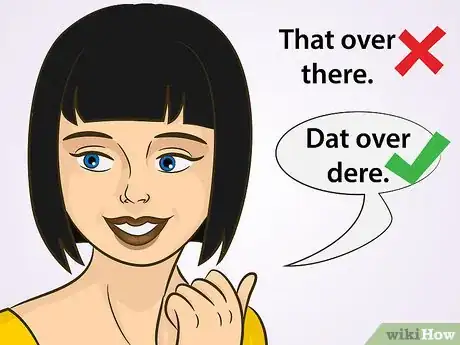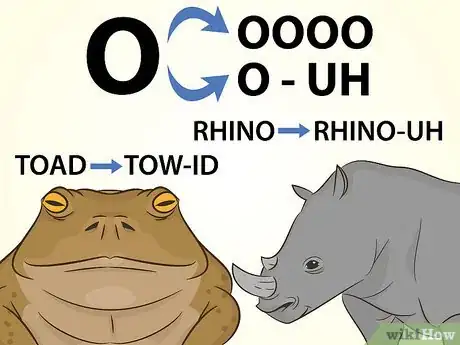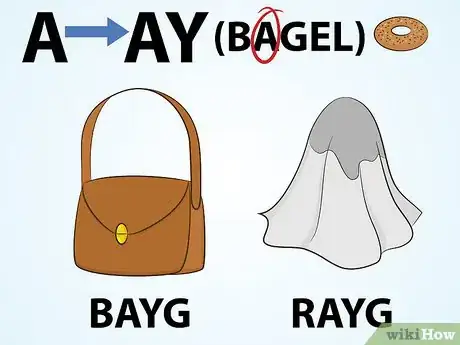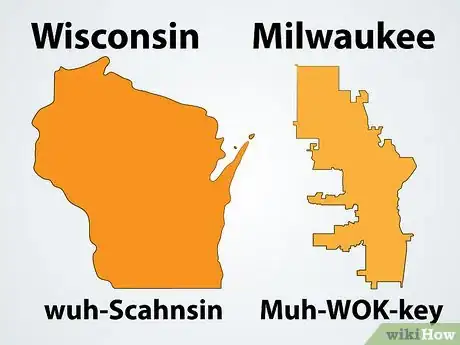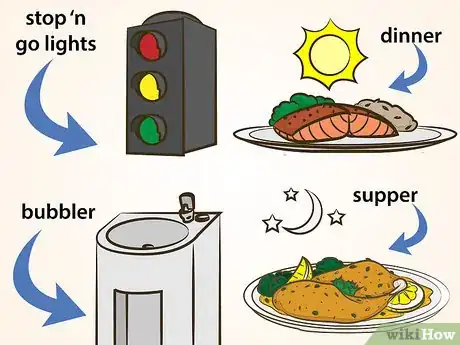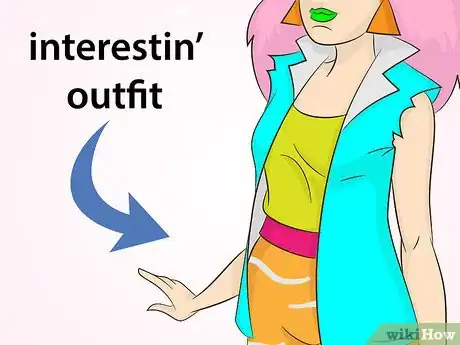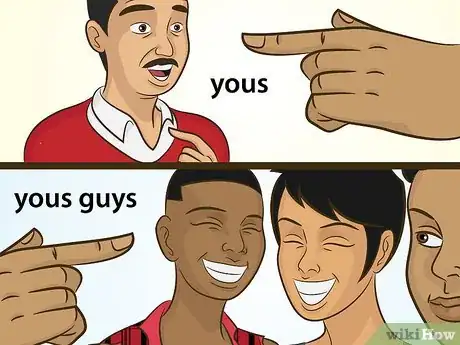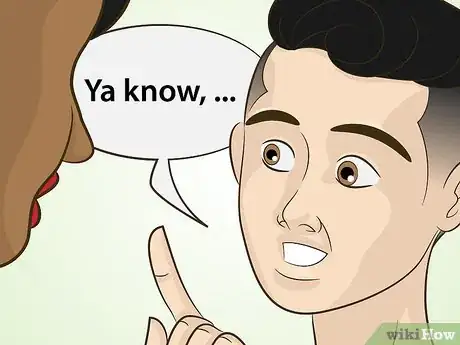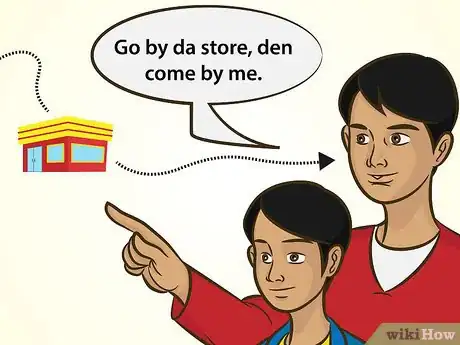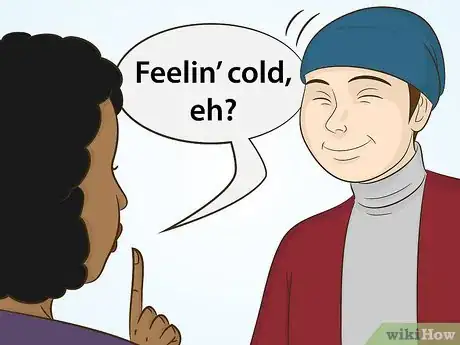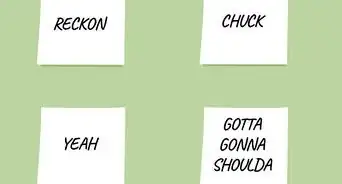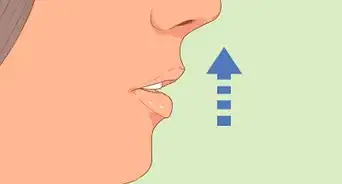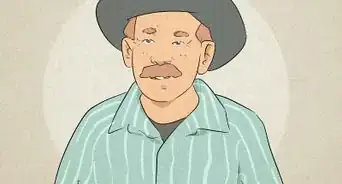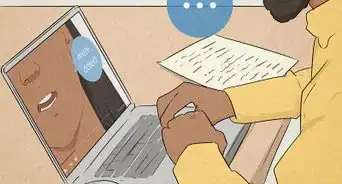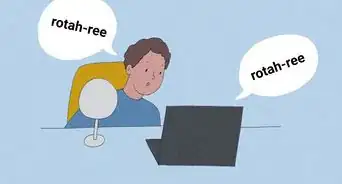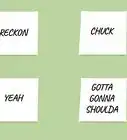X
This article was co-authored by wikiHow Staff. Our trained team of editors and researchers validate articles for accuracy and comprehensiveness. wikiHow's Content Management Team carefully monitors the work from our editorial staff to ensure that each article is backed by trusted research and meets our high quality standards.
This article has been viewed 79,070 times.
Learn more...
Your first exposure to the Wisconsin way of speaking may be a jarring one. Wisconsinites speak in a strong, nasal tone and use several unique phrases. To do a Wisconsin accent, round out consonants and drag out vowels. Include some of the lingo and you may be able to blend in among Wisconsinites.
Steps
Part 1
Part 1 of 2:
Tweaking Vowels and Consonants
-
1Pronounce “th” like a “d.” Place your tongue behind your teeth as you say words like “that” and “there.” These words become “dat” and “dere.” Remember to speak with a nasal tone, letting your voice resonate through your nose.[1]
- Other “th” word examples include this, these, and those.
-
2Drop the “g” off “-ing” words. Abbreviate these words by leaving out the ending. A word like “going” becomes “goin’.” In Wisconsin, “They’re going fishing” becomes “Dey’re goin’ fishin’.”[2]
- Another example is, “I’d be happy calling ’ dem stop ‘n go lights.”
Advertisement -
3Lengthen long “o” sounds into two syllables. The word “toad” normally has one syllable. In Wisconsin, pronounce it with a long “o” and a short i. It’ll sound like “tow-id.”[3]
- A word such as “rhino” becomes “rhino-uh.” Pronounce the “no” with two syllables so it sounds like the name Noah.
-
4Turn the short “a” into a long “a” sound for some words. The “a” in words like bag and drag are pronounced like the “a” in bagel. Draw out the vowel. Bag becomes “bayg” and drag becomes “drayg.”
- A rag becomes a “rayg” and lag becomes “layg.”
Advertisement
Part 2
Part 2 of 2:
Using Wisconsin Lingo
-
1Memorize Wisconsinite pronunciations for the state and cities. The “Wi” in Wisconsin is softly pronounced as “Wah.” The “o” is pronounced like the “a” in “cat,” so you may hear “wuh-Scahnsin.” Milwaukee is pronounced without the “l,” so it sounds like “Muh-WOK-key.” Shawano is pronounced “Shah-no.”[4]
-
2"Up North" is the term for anything north of you, all the way up to the state border. Many people go north to vacation, hunt, and fish.[5]
-
3Learn local terms for objects. Some objects in Wisconsin have different names than elsewhere. A bubbler is a drinking fountain. Traffic lights are referred to as stop ‘n go lights. The midday meal may be called dinner, but the evening meal is supper. Some people may refer to ATMs as TYME machines.[6]
-
4Use “interesting” for polite criticism. For example, a Wisconsinite may say, “Dat’s an interesting ’ lookin’ blouse.” It means the blouse looks strange or unpleasant. The word can be used to describe bad-tasting food without aggression.[7]
-
5Say “yous” or “yous guys” when referring to others. You becomes “yous.” When referring to a group, say “yous guys.” For example,you may use these words to ask where someone is from. “Where-a-bouts are yous guys from?”
-
6Say “ya know” to start and end thoughts. You can start with “Ya know” to show that you’re about to share a thought. Ending a sentence with “ya know?” is a way of asking if someone else agrees or understands what you shared.
-
7Make polite requests with “real quick” and “one time.” Someone can say to you, “Can you stop by da store real quick?” or “Let me see dat one time.” They aren’t demanding that you be speedy. “Real quick” and “one time” make requests seem softer and less of a hassle.[8]
- ”Once” is also used in place of “one time.” For example, say, “Come by here once” to suggest that someone should come to where you are.
-
8Use “go by” or “come by” for direction. Instead of “go to” or “come to,” replace the “to” with “by.” For example, say, “Go by da store, den come by me.” It means the person should go to the store, then go to your location.[9]
- ”By” may also be used as a greeting, such as in “How’s by you?” You may answer this with “Fair to middling ’.”
-
9Add “‘n so” and “eh” to turn sentences into gentle questions. Both phrases have the same meaning. They are used at the ends of statements to prompt a response. “Eh?” is pronounced like “hay” without the “h.” “‘N so” is pronounced like “en SEW” and stands for “ain’t that so?”[10]
- Although these two phrases are used the same way, “‘n so?” sounds a little stronger. Your conversation partner may provide a more forceful response to what you said.
Advertisement
Community Q&A
-
QuestionI'm from Wisconsin and don't have a Wisconsin accent. I've never heard anyone talk about it. Is there such a thing?
 Community AnswerYes, most people from Wisconsin have accents. You may not notice it because everyone else around you speaks that way; the majority of people consider inhabitants of the area they're from as speaking "normally" and those from other regions as having an accent. The Midwest accent is illustrated (in an overemphasized manner) in movies like Fargo.
Community AnswerYes, most people from Wisconsin have accents. You may not notice it because everyone else around you speaks that way; the majority of people consider inhabitants of the area they're from as speaking "normally" and those from other regions as having an accent. The Midwest accent is illustrated (in an overemphasized manner) in movies like Fargo. -
QuestionWhy do Wisconsin people and Minnesota people have similar accents?
 Community AnswerWisconsin people and Minnesota people have similar accents because the states border each other, and some accents aren't exclusive to just one state.
Community AnswerWisconsin people and Minnesota people have similar accents because the states border each other, and some accents aren't exclusive to just one state.
Advertisement
References
- ↑ https://www.youtube.com/watch?v=vQ-V3SG43-c
- ↑ http://highpointers.org/how-to-speak-wisconsin-good/
- ↑ http://www.folklib.net/history/scansin.shtml
- ↑ http://highpointers.org/how-to-speak-wisconsin-good/
- ↑ https://owlcation.com/humanities/How-To-Speak-Wisconsin-For-Beginners
- ↑ https://owlcation.com/humanities/How-To-Speak-Wisconsin-For-Beginners
- ↑ http://highpointers.org/how-to-speak-wisconsin-good/
- ↑ https://matadornetwork.com/read/13-expressions-need-learn-coming-wisconsin/
- ↑ http://www.folklib.net/history/scansin.shtml
About This Article
Advertisement
